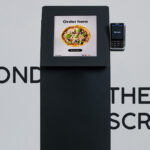Published by
With digital transformation now the norm for companies, and with many having accelerated their strategies due to Covid, what should brands do to stand out in an increasingly crowded digital world?
Brands trying to navigate today’s competitive environment are facing a digital dilemma. It’s no secret that digital experiences have become fundamental to every industry. They’re the primary vehicle for engaging with customers and, quite frankly, surviving in the virtual era.
The relationship between digital engagement and company growth has never been felt more intensely than during the pandemic: Customers waved goodbye to in-person interactions and embraced the online world. In fact, research from McKinsey has shown that organizations that experimented with and invested in new digital technologies during the pandemic are twice as likely to report improved revenue growth than those that didn’t. Now, as everyone continues to adapt, businesses must tackle the realities of digital transformations and think about them in a more fluid way.
Go Digital or Get Left Behind
Brands that were able to create meaningful connections between their businesses and customers, even during these distant times, will be the ones that continue to compete and win in this uncertain market. The same research from McKinsey has shown that in North America, digital adoption (meaning customer interactions that happen digitally) grew by 58 percent, to an average of 65 percent. Globally, digital adoption grew by 61 percent to an average of 58 percent.
The indicators are pointing toward a world where digital interactions, such as touch screens and interactive tablets, are no longer just “nice to haves.” But if a brand hasn’t already made the decision to digitally adapt, it has more than likely missed its window for transformation. A study from Progress suggests that more than half (55 percent) of businesses that haven’t started the process yet believe they have less than a year before they start to suffer financially and lose market share.
Why? Because the way consumers want to access information is constantly subject to change. Think about Blockbuster as an example — takes you back, right? In its heyday, it was one of the largest and most successful VHS rental companies in the world. The company eventually evolved with the times and began selling DVDs, but filed for bankruptcy as it failed to keep up with the likes of Netflix and the DVD-by-mail phenomenon. Fast forward a decade and it no longer exists because streaming services dominate the market and set the pace for entrants. Missing that critical window for transformation, in the midst of new digital expectations, meant that Blockbuster almost automatically became irrelevant in the minds of consumers looking for the next best experience.
The sheer advancement in digital resources that most brands have made means we’re swiftly moving from the era of digital transformation and into the post-digital transformation age. Business leaders who have learned to adapt to the seismic changes over the past 18 months or so are now asking themselves, “What’s next?” What does the post-digital transformation age look like, and what can brands do to prepare? Here are three suggestions.
Differentiate Your Brand
The reality is that digital-native challengers are disrupting all industries. Covid-19 heightened this trend and radically accelerated the need for transformation. New and exciting technologies come into the mix every day, leaving companies battling to meet somewhat unreasonable expectations, though by no means is this unjust. Consumers, who have constant access to digital applications, now reasonably expect that they can always get the information they want in a matter of seconds.
That’s why staying ahead of the pack and crafting the next generation of digital experiences is essential to survival. The way to do this is by recognizing and personally serving the customer behind the screen. Knowing them, their preferences, their likes and their norms has become mandatory and will be essential in differentiating any one brand from others.
Let’s take QSR (quick service restaurants) as an example sector, which is often acknowledged as a frontrunner in digital trends. Right now, Chipotle is showing other QSRs the ropes. The company recently opened up “Chipotlanes” at new stores, which enable customers to order online or on the app and then pick up their orders without leaving their cars. These lanes have proven so successful that, after being introduced in 2019, 62 percent of new stores that were opened last year included a Chipotlane. And the strategy is paying off. By doubling down on a digital-first approach, Chipotle has seen sales grow by 177 percent in one year, with nearly half of its sales now coming from digital channels.
Clearly, then, long-term growth now lies in creating digital change, supported by investment, which will see a brand through the next 36 months, not 12. What’s important to remember, not just for QSRs, but for all sectors, is that as soon as a digital experience is brought to market, it’s time to be thinking about the next wave of iteration to stay relevant and in demand.
Customers don’t see competition in the same way businesses do. We’ve been trained to compare experiences, no matter the sector, and to immediately begin comparing our last experience to the next one. And, with some amazing experiences out there for comparison, companies of all types must shift their thinking from simply providing an interface for users to creating the best possible experience that lives up to customer expectations.
Leverage Your Brand for an Emotional Connection
Even though new technologies emerge over time, the key success criteria of a digital experience remain timeless. Even 10 years ago, brands kept buzzwords like “frictionless,” “personalized,” and “contextual” front of mind when designing their experiences. These features are still important, but now consumers expect them with everything they do. Customers know that the moment an experience fails to be personalized, seamless and attention-grabbing, they can turn to many other competitors. Now more than ever, the emotional connection that a consumer forms with your brand matters. It may be the only thing that can truly make a brand stand out from the sea of sameness in which customers view a company as no different from its competition.
That’s why, nowadays, the brand itself has become the value a company holds; any experience should be unique to that brand. Think about yourself as a consumer: More often than not, your perception of brands and your awareness of options available to you actually come from your engagement with experiences. Brand and experience have become two sides of the same coin, whereby the experience has grown to become the avenue for the expression of the brand.
Today, customers often discover new brands outside of typical brand activation or advertising channels. Oftentimes, we start the purchase journey with a Google search. But what many people don’t realize is that some of the largest search engines or starting points aren’t Google, but rather YouTube and Amazon. The purchasing journey no longer begins with building awareness of a brand; instead, we’re starting with a search and engaging with that brand ourselves.
Brand experiences — both physical and digital — have therefore never been more important to a brand’s connection with customers. Research from Forrester reveals that 70 percent of emotionally engaged consumers spend two times or more on brands they are loyal to, compared with 49 percent with low emotional engagement. Because of the infinite options customers have at their fingertips, emotional connections will be a key driver for loyalty for years to come.
Avoid the Commoditization Pitfall
Consumers’ buying decisions are often complicated by indecisiveness. This is the so-called “messy middle,” meaning the complex journey consumers follow on the path to making a purchase. Businesses have mere seconds to grab the attention of a potential customer, so differentiating themselves from the competition and ensuring that their experience is as pain-free as possible is paramount.
In the current market, digital experiences look increasingly similar. Every website and mobile application have the same layout, the same menu style, even the same visuals. Brands are stuck in the sea of sameness and are no longer unique. If customers search and find a specific website or mobile application that looks like every other experience, they’re going to start to find new ways to differentiate. More than likely, that means looking for some other means of comparison. If they’re on the purchase journey, they might look for the lowest price or the most convenient fulfillment.
The important thing to recognize is they’re looking for convenience. They’re not truly choosing a specific brand for any other reason. This makes the emotional connection opportunity of even greater importance. Brands need to capitalize on that opportunity by evaluating the market and its audience, understand the customers’ explicit needs and implicit expectations, discover those underlying emotional triggers and explore how best they can be leveraged to drive specific actions.
The Opportunity of the New Digital Challenge
Although the post-digital transformation age is uncharted territory, the leap is well worth the risk. Every company out there must be willing to go beyond simply providing interactions and interfaces, or risk fading into the background much like Blockbuster. Without a guaranteed recipe for success, brands must connect with their customers to truly personalize the experience, stir an emotional response, and create a more seamless purchasing journey.
The opportunity to understand and recognize the emotional state of the consumer is there to be leveraged. Only through creating such emphasized change will brands be able to drive action, and this doesn’t necessarily mean transaction. It could also mean loyalty, advocacy, or further engagement. Either way, brands should be measuring the effectiveness of these three digital tactics to constantly iterate and ensure their brand experience is crafted to suit the next generation of customers.
Share:
Categories
tags
Related Posts


The Great Big Budget Cut: Prioritization


